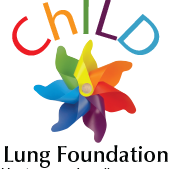Normally, when a person has inflammation or infection in the lungs, their body begins a process of remodeling that repairs the damage and replaces dead or damaged cells with normal new cells. However, in some cases, this remodeling does not proceed normally. If scar tissue, granulation, or necrosis (cell death) occurs, then normal airway structures and functions can be destroyed and can be replaced with thicker fibrous tissue. The severity of OB is dependent on how much of the normal tissue is ruined in this process.
OB can develop in response to several causes. These include:
- Some common infections including adenovirus, measles, influenza, mycoplasma, and pertussis
- Exposure to certain drugs (penicillamine) or environmental inhalants
- Barotrauma as seen in Bronchopulmonary Dysplasia
- Chronic aspiration of stomach contents due to Gastroesophageal Reflux
- Some connective tissue diseases
- Post transplantation complications
Initially, OB patients show symptoms of common bronchiolitis, bronchitis or pneumonia that can be accompanied by fever, cough and periods of wheezing and shortness of breath. However, these symptoms come and go for weeks to months longer than a typical infection. The patients have repeated episodes of wheezing, dyspnea, productive and chronic cough, pneumonia & atelectasis (a chronic form of bronchiolitis). In the acute phase, these patients can progress rapidly and it can be fatal in some cases. Other patients form a chronic pulmonary disease that includes recurrent pneumonias, bronchiectasis, and in some cases, they can develop unilateral hyperlucent lung syndrome (Swyer-James Syndrome).
Chest Xrays and CT scans can have many abnormal findings in these patients including increased interstitial markings, thickening around the bronchioles, and can have collapse and consolidation of segments or lobes of the lung. As OB progresses, it can lead to hyperinflation and unilateral hyperlucent lung syndrome (cloudier than normal lung tissue) that can be seen in imaging studies. Hyperlucent lung syndrome may be caused by the destruction of peripheral capillaries in the affected lung. Early in the infection, images will often show:
- a pattern similar to miliary tuberculosis
- may show diffuse infiltrates
- peribronchial thickening (thicker tissue around the airways that can cause obstruction)
- increased interstitial markings
- areas of patchy bronchopneumonia
- collapse and consolidation of segments or lobes
As OB progresses, images will show:
- increased pulmonary markings
- generalized hyperinflation (which indicates obstruction of the small airways that take air to the alveoli)
- unilateral hyperlucent lung syndrome
Biopsy is often recommended to confirm the diagnosis of OB and to take a look at how much of the tissue has been damaged. If there is current inflammation, it could indicate that the disease is still progressing and needs to be treated to halt further damage to the lungs.
Treatment
If an underlying cause can be found, like aspiration or inflammation, treatment to prevent further damage to the lung is recommended. However, for many OB patients, the treatment is mainly supportive.
OB children often have laboured breathing, which uses more calories than normal. As a result, poor weight gain (failure to thrive) is often seen. Optimizing the child’s nutritional status to promote adequate growth is important for overall health.
Oxygen supplementation may also be required. The amount of oxygen needed varies in OB patients. Common colds and flu can be more severe in OB patients, so limiting exposure to respiratory infections is also important. Seasonal flu shots are recommended.
Oral corticosteroids, which are used to decrease inflammation, have been shown to be helpful in some patients. However, these have strong side effects and the patients should be monitored closely for signs of osteoporosis, adrenal failure, and other complications.
More information
